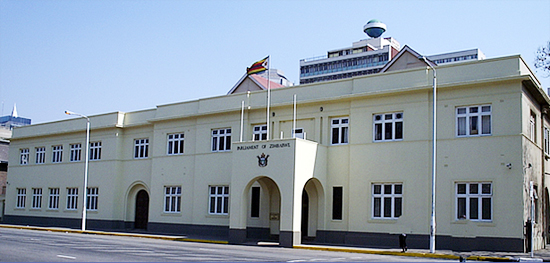The Parliamentary Ad Hoc Committee on the Analysis of the Zimbabwe Electoral Commission (ZEC) 2022 Preliminary Report on Delimitation Exercise identified a number of inconsistencies and irregularities that the commission must address before presenting the final report.
The Committee’s analysis, which it will present to the National Assembly and Senate on Friday, includes key findings and observations such as ward boundaries delimited above and below the maximum and minimum thresholds, insufficient information on ward descriptions, a highly complicated coordinate system, an unspecified map scale, and unlabelled wards.
Other observations include the absence of topography characteristics on maps depicting wards and constituencies, the absence of historic and existing boundaries, a lack of rationale from ZEC for changes in boundaries in specific wards and constituencies, and the absence of polling booths on the maps.
In general, the Committee stated that there was an option for ZEC Commissioners to append signatures, but they did not, despite the fact that the 2007 Final Delimitation Report was signed by all commissioners except one.
The Committee stated that prior delimitation reports provided more detail in terms of descriptions than the current report, and that ZEC could have kept the same user-friendly manner.
‘Worryingly, ZEC used preliminary census data in the delimitation procedure, prompting the committee’s recommendation that it use the census population in its entirety.
ZEC’s possible misinterpretation of the minimum and maximum threshold apparent was also highlighted.
The report shows evidence of violations of sections 161 (3) and (4) of the Constitution providing for an equal number of voters in the boundaries of Constituencies and wards, as “there are instances where some constituencies and wards had more registered voters than others within the same province.”
An example is Binga district which had 70 988 voters but had the same number of wards with Tsholotsho district which had 38 619 voters, and Bubi district which had 33 295 voters.
There is also evidence that issues such as local communication, geographical distribution of registered voters, and community of interest among registered voters were not properly met.
It was emphasized that the collapsing of constituencies and wards has an impact on the legitimate expectations of stakeholders who may be harmed by the decision.
The committee stated that during the oral hearing, ZEC explained that seats with fewer registered voters were collapsed to give registered voters to constituencies with a higher number of registered voters.
“However, in some instances, the formula was not applied consistently as wards or constituencies with more registered voters were collapsed to boost numbers in wards of constituencies with fewer numbers,” read the report.
For example, Chikomba Central which had 16 611 voters was collapsed to cede voters to Chikomba East and Chikomba West which had 14 240 and 30 187, respectively.
Similarly, Gutu South with 18 645 voters was collapsed to cede voters to Gutu Central and Gutu East which had 21 700 and 16 822 voters, respectively.
“ZEC confirmed to the meeting that it was those constituencies with lower voter population which were being collapsed to meet thresholds in bigger constituencies.”
The committee also observed there was possible misinterpretation by ZEC of the 20 percent variance provision, as some wards and constituencies ended up having a variance of up to 40 percent.
“This, therefore, defeats the spirit of the Constitution in trying to achieve equality of voters. The Annexure to the Report clearly demonstrate how the standard deviation in certain instances was well above the 20 percent variance,” read the report
The committee stated Section 37A of the Electoral Act requires stakeholder consultations but these were not fairly done considering that there are certain areas wherein key stakeholders such as traditional leaders were not consulted.
“To this end, the Committee’s view is that, if stakeholder consultations were widely conducted, the community of interest issues should have been avoided,” read the report.
The Committee noted the coordinate system used by ZEC was too complicated for ordinary citizens to understand and interpret spatial data represented on the maps.
“It is the Committee’s considered view that ZEC had an option to use a simpler geographic coordinate system that represents location in terms of degrees, minutes, and seconds, such that users can simply enter the coordinates on google maps to identify locations in their respective wards and constituencies,” read the report, adding ZEC provided maps of wards and constituencies where some of the wards were labelled and some were not labelled, making it difficult for one to identify those wards that were unlabelled.”
There were also descriptions that referred to polling stations but were not indicated on the map.
“For example, in Ward 1 of Binga North Constituency, in Binga RDC, ZEC argues in its report that there are eight polling stations, but only one is indicated on the map. There are many more examples that relate to this scenario.”
The descriptions provided by ZEC appeared to the Committee to be merely definitions of how the boundaries were drawn, but they do not justify why specific boundary changes were made, and why, other than the statistical balance of figures, such boundaries would make a better contribution to the country’s developmental agenda or that of local society administration.

